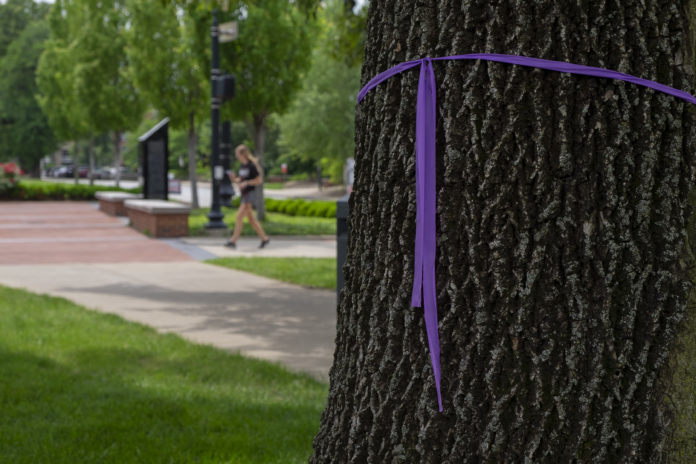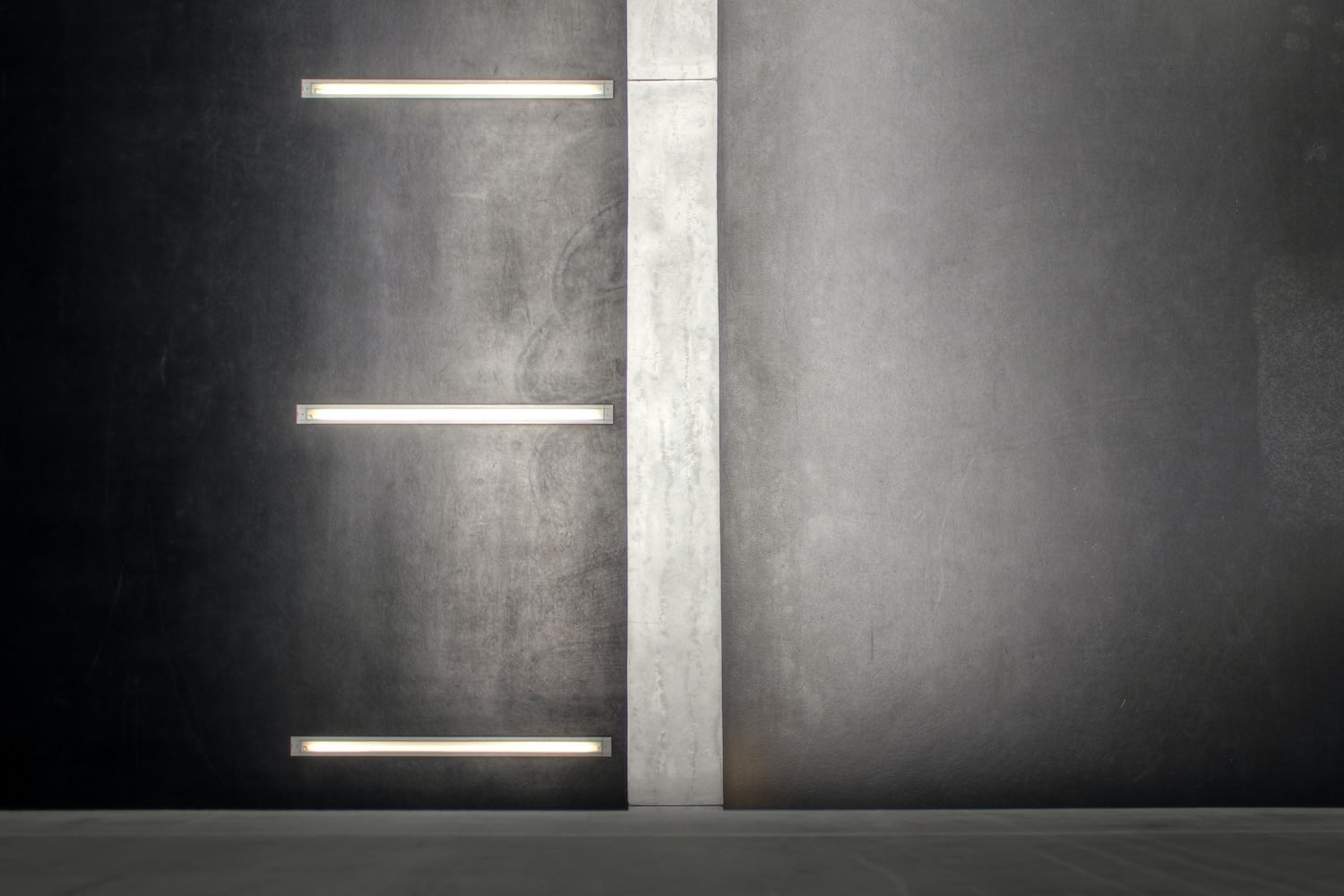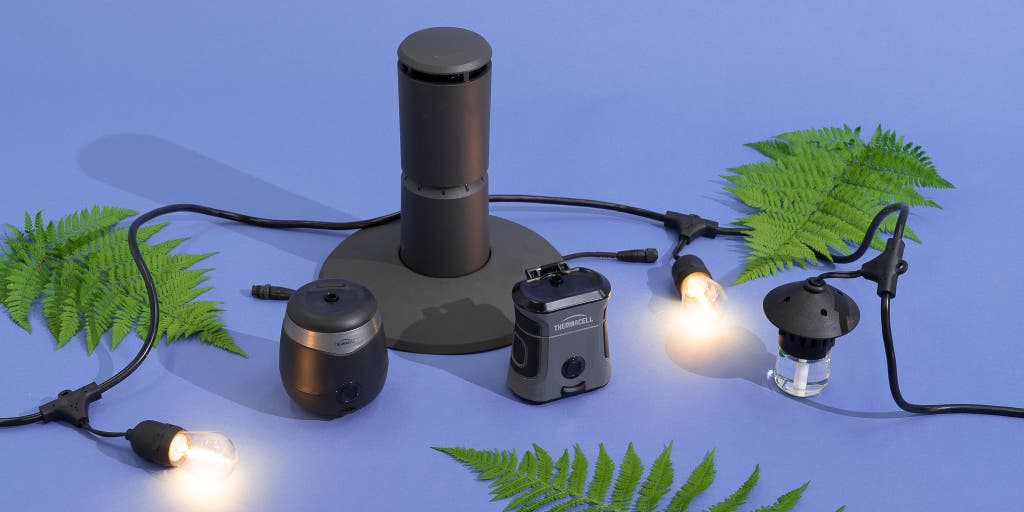- Spray Paint Vs Brush Paint: The Ultimate Showdown for Outdoor Furniture - November 13, 2024
- How Do You Make a Pool Party Special: 10 Sizzling Ideas! - October 23, 2024
- Does White Vinegar Harm Metal Furniture? Protect Your Investment Now! - October 23, 2024
Rope lights do not attract bugs because they emit low amounts of heat and UV light. Rope lights, which are long tubes of enclosed LED lights, use energy-efficient light emitting diodes (LEDs) that emit little to no heat and UV light, two factors that typically attract bugs.
This makes rope lights a great option for outdoor lighting without the worry of attracting pests. Additionally, rope lights are versatile, easy to install, and come in various colors and lengths, making them a popular choice for decorative lighting purposes.
Whether for a backyard gathering or holiday decorations, rope lights provide an appealing and bug-free lighting solution.
The Connection Between Light And Insects
Rope lights may attract bugs due to the presence of light. Insects are naturally drawn to light sources, which can make them gather around rope lights.
Rope lights are a popular lighting option for decorating outdoor spaces. They create a warm and inviting ambiance, perfect for nighttime gatherings or simply enjoying a quiet evening alone. However, many people wonder if rope lights attract bugs. In this blog post, we will explore the connection between light and insects, specifically focusing on different types of lights and their attractiveness to bugs, as well as explaining the phototaxis behavior in insects.
Different Types Of Lights And Their Attractiveness To Insects:
- Incandescent lights: These lights produce a warm and yellowish glow. Unfortunately, this type of light is highly attractive to insects, as it falls within the wavelength range that bugs are naturally drawn to.
- Halogen lights: Similarly to incandescent lights, halogens emit a warm light and are therefore quite appealing to insects. They can significantly increase the number of bugs buzzing around your outdoor space.
- Fluorescent lights: This type of lighting emits a cooler and bluer light, which tends to be less attractive to insects compared to incandescent and halogen lights.
- LED lights: LED lights have gained popularity due to their energy efficiency and versatility. From an insect perspective, LED lights do not emit as much UV light, making them less attractive to bugs.
Explanation Of The Phototaxis Behavior In Bugs:
- Positive phototaxis: Many insects exhibit positive phototaxis, which means they are attracted to light sources. This behavior is commonly observed in moths, mosquitoes, and flies. They are naturally drawn towards light and can easily become disoriented by it.
- UV light attraction: Ultraviolet (UV) light is particularly attractive to many insects. As mentioned earlier, incandescent and halogen lights emit more UV light compared to other types of lights. This can explain why these lights tend to attract a larger number of bugs.
- Navigation confusion: Insects rely on natural light sources such as the moon and stars for navigation. Artificial lights can disrupt this navigation system, leading insects to become confused and inadvertently drawn towards them.
The type and intensity of light can significantly impact the attraction of insects. Incandescent and halogen lights, which emit more UV light, tend to attract bugs more than fluorescent and LED lights. Understanding the phototaxis behavior of bugs can help inform your lighting choices and minimize unwanted insect activity in your outdoor spaces.

Credit: louisville.edu
Understanding How Rope Lights Work
Rope lights function by emitting a continuous line of light from a flexible tube. However, they do not attract bugs due to their low heat output and lack of ultraviolet (UV) rays.
Overview Of Rope Lights Technology
Rope lights are a popular lighting option for various indoor and outdoor settings. These flexible and versatile lights consist of small LED bulbs enclosed within a clear plastic or silicone tube. The bulbs are evenly spaced out along the length of the rope, creating a continuous strip of dazzling illumination.
But how do rope lights work? Let’s explore the technology behind these enchanting light sources.
Components Of Rope Lights And How They Emit Light
Rope lights consist of three main components that work together to emit light:
- LED bulbs: Rope lights use energy-efficient LED bulbs that emit light when an electric current passes through them. LEDs come in different colors and have a longer lifespan compared to traditional incandescent bulbs.
- Conducting wires: Conducting wires run through the rope and provide a path for the electric current from the power source to reach the LEDs.
- Outer protective casing: The LEDs and conducting wires are encased in a clear plastic or silicone tubing. This casing protects the components from damage and weather conditions while allowing the light to shine through.
When electricity flows through the conducting wires, it reaches the LED bulbs, causing them to emit light. The LEDs in rope lights are meticulously placed and spaced to create an even distribution of brightness along the entire rope.
The Level Of Brightness And Color Of Rope Lights
- Brightness: Rope lights come in various brightness levels, allowing you to select the one that suits your needs. The brightness is determined by the number and power of the LED bulbs per unit length. Higher bulb density and wattage result in brighter rope lights.
- Color: Rope lights are available in a multitude of colors, ranging from classic white to vibrant hues. The color of the light is dictated by the LED bulbs used. Each LED is designed to emit a specific color, allowing you to choose the perfect ambiance for your space.
It’s important to note that while rope lights provide a pleasant and attractive illumination, they do not attract bugs specifically. Insects are generally more attracted to sources of UV light or warm incandescent lights.
Rope lights are not only aesthetically pleasing but also energy-efficient and durable. They offer a cost-effective way to enhance the visual appeal of your surroundings, whether it’s for decorative purposes or practical lighting needs.
The Impact Of Light On Bug Attraction
Rope lights have a minimal impact on bug attraction due to their low ultraviolet emission. Smaller bugs like mosquitoes are not typically attracted to rope lights, making them a suitable choice for outdoor lighting.
Bug attraction to light sources can vary based on several factors. In this section, we will examine these factors and explore the role of wavelength and color temperature in bug attraction.
Examining The Factors That Attract Bugs To Light Sources:
- Intensity: Bright lights tend to attract bugs more than dim ones.
- Duration: Bugs are more likely to be drawn to lights that stay on for longer periods.
- UV light: Ultraviolet (UV) light can be highly attractive to insects, particularly those with phototaxis.
Comparing The Bug Attraction Of Different Light Sources:
Different light sources may vary in their attractiveness to bugs. Here are some key points to consider:
- Incandescent bulbs: These traditional bulbs emit a warm, yellow light that generally has a lower bug attraction compared to other sources.
- Compact fluorescent lights (CFLs): CFLs emit a cooler light and have been known to attract bugs more than incandescent bulbs.
- LED lights: LED lights are available in various colors and wavelengths. While bugs are generally less attracted to LEDs, specific colors can still have varying levels of bug attraction.
The Role Of Wavelength And Color Temperature In Bug Attraction:
The wavelength and color temperature of light sources play a significant role in attracting bugs. Consider the following points:
- Wavelength: Insects tend to be more attracted to shorter wavelengths, such as those close to the UV spectrum.
- Color temperature: Higher color temperatures, corresponding to whiter and bluer lights, can be more attractive to bugs. However, this can vary between species.
To minimize bug attraction to light sources, it is advisable to use bulbs with lower intensity, shorter durations, and emit light at longer wavelengths. Additionally, opt for LED lights with warmer color temperatures to reduce the likelihood of attracting bugs.
Remember, it’s important to balance bug reduction with other lighting requirements and preferences.
Debunking The Rope Lights And Bug Attraction Myth
Rope lights don’t attract bugs: a common myth debunked. Find out the truth behind this misconception.
Have you ever wondered whether those charming rope lights adorning your patio or garden terrace attract bugs? Well, you’ll be pleased to know that this common myth is nothing more than a misconception. In fact, rope lights are known for being less attractive to bugs compared to other traditional lighting options.
Let’s explore why rope lights are considered bug-resistant, backed by scientific studies and experiments.
Why Rope Lights Are Considered As Less Attractive To Bugs
According to research and observations conducted by entomologists, rope lights have shown a lower bug attraction rate compared to other types of lights. Here are some reasons why:
- Light wavelength: Rope lights emit light in the yellow or amber wavelength, which is less appealing to most bugs. This color spectrum is less likely to attract bugs than traditional white or incandescent lights.
- Heat emission: Unlike conventional bulbs, rope lights produce significantly less heat. Bugs are often drawn to the warmth emitted by lights, but rope lights’ cooler temperature discourages them from gathering around.
- Lack of UV radiation: Many insects, such as moths, are attracted to ultraviolet (UV) radiation. However, rope lights emit minimal to no UV light, making them unappealing to such insects.
Insights From Scientific Studies And Experiments
Various scientific studies have examined bug attraction to different types of lights, including rope lights. Here are some key insights gained from these studies:
- A study conducted by the University of Florida compared bug attraction to different light sources and concluded that insects were significantly less attracted to yellow-colored lights. This finding supports the notion that rope lights, with their yellow or amber hue, are indeed less attractive to bugs.
- Another experiment, conducted by the University of Kentucky, investigated the effect of different light wavelengths on bug behavior. The results indicated that bugs were more attracted to shorter wavelengths like blue and ultraviolet, while longer wavelengths like yellow and red exhibited lower attraction.
- Furthermore, an observation-based study conducted by the Entomological Society of America found that rope lights placed around outdoor areas had fewer bug accumulations compared to other types of lights. This suggests that rope lights are less likely to attract insects and can help maintain bug-free outdoor spaces.
From these scientific studies and experiments, it is evident that rope lights have a decreased tendency to attract bugs compared to other lighting options. Factors such as light wavelength, heat emission, and UV radiation all contribute to repelling insects and mosquitoes.
So, if you’re worried about bugs invading your outdoor space, decorating with rope lights can be a smart choice. Not only do they add a touch of charm and ambiance, but they also keep those pesky bugs at bay.
Practical Tips To Minimize Bug Attraction
Rope lights may not attract bugs as much as regular outdoor lights due to their low heat output and less attractive light spectrum. However, it is still advisable to take practical steps like using bug repellent, keeping the area clean, and minimizing other light sources to further reduce bug attraction.
How To Use Rope Lights Strategically To Minimize Bug Presence
- Install rope lights away from areas prone to bug attraction, such as water sources or vegetation.
- Place rope lights at a higher elevation, as bugs tend to gather close to the ground.
- Opt for LED rope lights, as they emit less heat and are less attractive to bugs compared to incandescent lights.
- Use warm white or yellow rope lights instead of blue or white, as the latter colors can be more appealing to insects.
- Consider using rope lights with a dimmer function, as a lower intensity of light may attract fewer bugs.
Combining Rope Lights With Bug Repellents For Enhanced Bug-Free Ambiance
- Surround rope lights with bug-repelling plants like lavender, lemongrass, or citronella, creating a dual defense against bugs.
- Apply insect repellent sprays or lotions to your body before spending time near rope lights.
- Utilize bug zappers or bug repellent candles in the vicinity of rope lights to further deter bugs.
- Position outdoor fans near rope lights to create airflow that makes it difficult for bugs to approach the area.
- Regularly clean and maintain rope lights to remove any debris or bug residue that might attract more bugs.
Maintenance Practices To Reduce Bug Attraction To Rope Lights
- Clean the area around rope lights regularly, removing any fallen leaves, grass clippings, or other debris that may serve as a food source for bugs.
- Routinely inspect rope lights for any cracks or damage that may allow bugs to nest or hide within.
- Avoid using excessive or bright lighting, as bugs are generally more attracted to intense sources of light.
- Enclose outdoor rope lights within protective covers or casings to prevent insects from directly accessing the bulbs.
- Periodically change the location of rope lights to prevent bugs from becoming accustomed to their presence.
Remember, by strategically using rope lights, combining them with bug repellents, and maintaining them properly, you can create an ambiance that minimizes bug attraction and lets you enjoy bug-free evenings outside.
Frequently Asked Questions For Do Rope Lights Attract Bugs
What Kind Of Lights Do Not Attract Bugs?
LED lights do not attract bugs due to their lower heat and different light wavelength.
Will String Lights Attract Bugs?
Yes, string lights can attract bugs due to the brightness and warmth they emit.
Do Led Lights Attract Bugs?
Yes, LED lights do not attract bugs due to the type of light they emit.
What Camping Lights Don T Attract Bugs?
Camping lights that don’t attract bugs are LED lights with yellow or red hues.
Do Rope Lights Attract Bugs?
Yes, rope lights can attract bugs due to the warm light they emit, but there are ways to mitigate this issue.
How Do Rope Lights Attract Bugs?
Rope lights attract bugs because they emit UV light, which is attractive to insects.
What Bugs Are Attracted To Rope Lights?
Various bugs are attracted to rope lights, including moths, flies, and mosquitoes.
Can Rope Lights Prevent Bug Attraction?
Yes, using bug-repellent bulbs or placing the rope lights away from entry points can help prevent bug attraction.
How To Keep Bugs Away From Rope Lights?
Keeping rope lights clean, using bug repellents, and installing bug zappers nearby can help keep bugs away.
Are Bug-Repellent Rope Lights Effective?
Bug-repellent rope lights can be effective in reducing bug attraction, but results may vary depending on the type of bugs in the area.
Conclusion
Overall, it is clear that rope lights can indeed attract bugs, especially if they emit a warm, yellowish light. The insects are naturally drawn to this light, mistaking it for the warmth given off by the sun or moon. While rope lights may not attract bugs as much as other outdoor lighting options, it is important to keep this in mind when deciding where and how to use them.
To minimize bug attraction, consider placing rope lights away from doorways or areas where people gather frequently. Additionally, selecting rope lights with a cooler, bluer light can help reduce bug visibility. It is also beneficial to keep your outdoor area clean from standing water and food debris, as this can attract bugs regardless of the type of lighting used.
Ultimately, the decision to use rope lights should be based on personal preference, taking into account both aesthetic and practical considerations. By considering the factors discussed and implementing some preventative measures, you can enjoy the ambiance rope lights offer without being overwhelmed by unwanted insect visitors.



